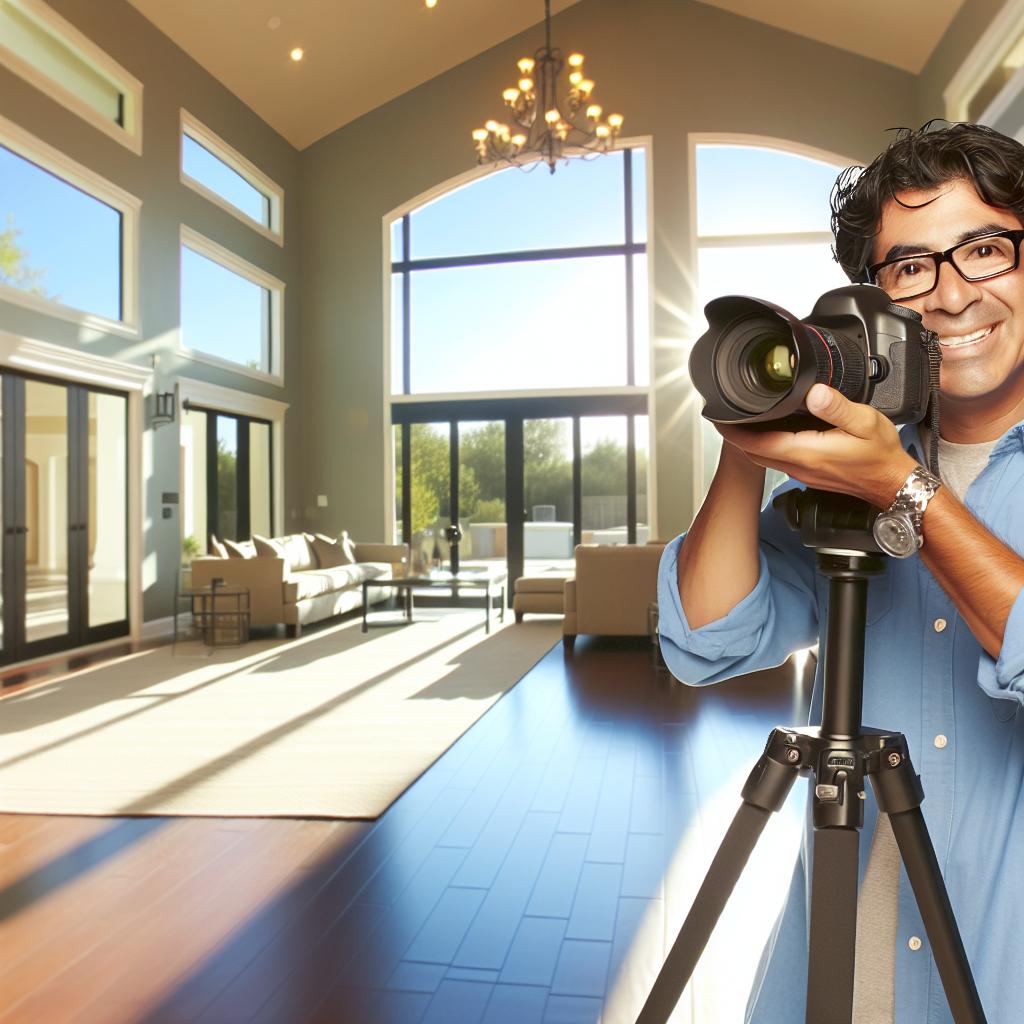“Mastering Real Estate Photography: Essential Equipment and Techniques for Stunning Property Shots”
Real estate photography is a critical component in showcasing properties, attracting potential buyers, and enhancing listings’ appeal. The right equipment can make a world of difference in capturing stunning images that tell a property’s story. In this comprehensive guide, we will explore the essential real estate photography equipment and provide practical tips on how to use them effectively. Whether you’re a novice or a seasoned photographer, mastering these tools and techniques will elevate your skills and set your work apart in the competitive real estate market.
Understanding the Basics of Real Estate Photography
Real estate photography is more than just snapping pictures of a property; it involves capturing the essence and unique features that make a home appealing. To achieve this, understanding the basics is crucial. Familiarize yourself with the principles of composition, lighting, and perspective, as these elements can greatly influence the final images. Proper training allows choosing the best angles and settings to highlight each property’s strengths. By investing time in mastering these foundational skills, you set the stage for consistently high-quality photographs that resonate with potential buyers.
Utilizing natural light is a fundamental aspect of capturing stunning real estate images. Natural light brings out true colors and imparts a warm and inviting atmosphere to your photos. Strategically plan your shoot to take advantage of golden hour lighting or use natural light from large windows. Additionally, understanding how to manipulate shadows and highlights will enhance the detail and depth in your images. Mastering the interplay of light and shadows is key to producing the best possible representations of properties.
The Essential Camera Gear for Real Estate Photography
When it comes to real estate photography, investing in the right camera gear is imperative. A DSLR or mirrorless camera with a full-frame sensor will provide the highest image quality, necessary for capturing intricate details in various lighting conditions. A wide-angle lens is essential for showcasing spacious interiors and creating a sense of depth, while a telephoto lens is useful for detailed shots of architectural features or landscapes. Equipping yourself with these camera essentials will significantly improve the versatility and quality of your photography.
Tripods are indispensable for real estate photography, providing stability and allowing for longer exposure times. This is particularly useful in low-light environments or for achieving sharp and consistent shots throughout a session. Consider a tripod with adjustable height and a robust head for maximum flexibility. A level tripod ensures that your photos maintain a professional and polished look by preventing tilted compositions. Investing in a good tripod will ease the shooting process and contribute to the overall image quality.
In addition to the camera and tripod, don’t overlook the importance of supplemental gear such as lens filters and external flashes. Polarizing filters can reduce glare and enhance sky and water’s vibrancy, essential for exterior shots. Meanwhile, an external flash can illuminate dark corners and provide balanced lighting in dimly lit rooms. By expanding your toolkit with these items, you can tackle a wider range of shooting scenarios and deliver impressive results consistently.
Post-Processing Techniques in Real Estate Photography
Post-processing is a powerful tool in real estate photography that can transform good photos into outstanding ones. Programs like Adobe Lightroom and Photoshop allow photographers to enhance images by adjusting brightness, contrast, and color balance. Focus on creating natural-looking results that faithfully represent the property’s appearance. By refining your post-processing skills, you can ensure that your images convey the property’s true potential to prospective buyers.
One common technique in post-processing is HDR (High Dynamic Range) photography, which combines multiple exposures to capture a higher range of luminance levels. This method is especially effective in real estate photography, as it allows you to highlight both interior details and external views through windows. By learning how to blend exposures seamlessly, you can create impressive images that accurately reflect the property’s atmosphere and lighting.
Virtual staging is another post-processing technique gaining popularity in real estate photography. It involves digitally furnishing empty spaces, allowing potential buyers to visualize a property’s potential without the logistics of physical staging. This technique, when done tastefully, enhances a property’s marketability and helps prospective buyers make informed decisions. Embrace virtual staging as a tool to add value to your photography services and provide clients with a competitive edge.
Elevating Your Real Estate Photography Skills
Continuous learning and skill enhancement are crucial for staying competitive in the real estate photography industry. Participate in workshops, online courses, and photography communities to stay updated with the latest trends and technologies. Learning from fellow photographers and sharing experiences can provide valuable insights and inspire creative approaches. By committing to ongoing education, you not only refine your skills but also expand your professional network.
Experimentation plays a vital role in honing your real estate photography skills. Test different perspectives, shooting techniques, and camera settings to discover what works best for various property types and layouts. Exploring new styles such as aerial photography or virtual tours can also broaden your service offerings. Through experimentation, you develop a versatile skill set that allows you to adapt to various client needs and project requirements.
Listening to client feedback is another effective way to improve your real estate photography skills. Understanding client expectations and incorporating their suggestions into your workflow can result in more satisfied customers and a more tailored approach to each project. A willingness to adapt and evolve based on client feedback will set you apart as a dedicated and customer-focused photographer, ultimately benefiting your business and reputation.
The Future of Real Estate Photography
The landscape of real estate photography is constantly evolving, with emerging technologies and trends shaping its future. As a photographer, staying ahead of these developments is crucial to maintaining a competitive edge. Innovations such as drone photography and virtual reality tours are gaining traction, providing immersive experiences for potential buyers. Embracing these technologies can differentiate your services and offer clients unique and engaging ways to showcase properties.
Sustainability and eco-friendliness are becoming increasingly important in real estate photography. Implementing energy-efficient practices and using sustainable materials in your workflow can appeal to eco-conscious clients. Highlighting a property’s green features through creative photography can resonate with today’s environmentally aware buyers. By aligning your services with sustainability, you contribute positively to the industry and society at large.
The demand for real estate photography is expected to grow as the real estate market continues to expand. Establishing a strong online presence and optimizing your website for search engines will be crucial to reaching new clients. Implementing SEO strategies, such as using relevant keywords and creating high-quality content, can improve your website’s ranking and visibility on search engines like Google. By concentrating on digital presence and marketing strategies, you can ensure long-term success in the ever-evolving real estate photography landscape.
By mastering essential real estate photography equipment and techniques, enhancing your skills, and staying informed about industry trends, you can produce compelling images that captivate clients and sell properties. Your journey toward becoming a successful real estate photographer begins here.




